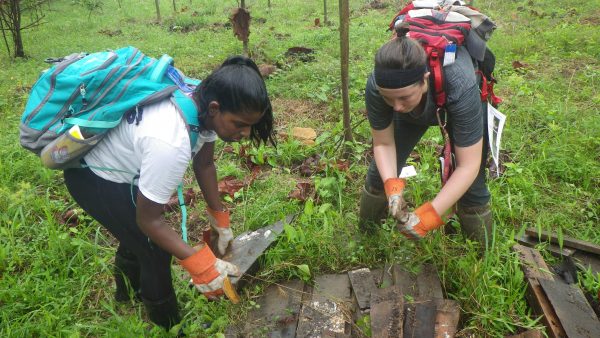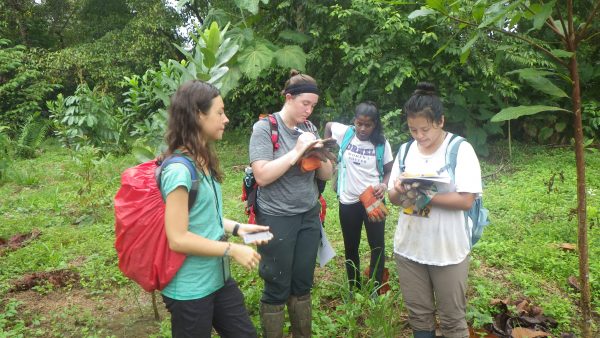Students studied under the Costa Rican sun and rain for their Block 3 course, Biological Problems.

The group traveled to the Osa Verde Biological Station, owned by Osa Conservation, near the southern tip of the Osa Peninsula. It’s among the most biologically diverse areas in the world. Students were tasked with investigating a biological problem, collecting and interpreting data, and writing a research report all in one block.
“This was our BIO 485 course, which means it is our final project for our majors, which is exciting,” said Kaylee Crouse ’19. “While we were there, we focused on one newly-created project at Osa Conservation.”
Osa Conservation is working to restore the site from pasture land to tropical rainforest. The students’ main goal was studying and collecting data on that process. They explored whether adding coarse woody debris (piles of dead wood traditionally found in the forest when trees fall) or planting a fast-growing species of trees would attract reptiles and amphibians back to the land as part of the restoration process.

This course is about doing research, giving students an opportunity to pursue a single project for an entire block. The students spend most days in the field collecting data. At the start of the course, when not in the field, they focus on reading and gaining background information. Toward the end of the course, when they have some data, they shift to analyzing their data and writing a scientific report.
Since it was a new project, Crouse said the process was a challenge. At the end of the three weeks, Crouse was surprised at how quickly the class bonded. The course also helped her see the wonder of the world around her.
“My biggest takeaway was realizing and remembering how wonderful and important wildlife is,” Crouse said. “One of our first days there, we were sitting at the station and within an hour we saw three species of monkeys. It was just amazing and relieving to be surrounded by so much nature.”
While the students learn a lot about tropical biodiversity, that may not be the most important lesson overall.
They learn that they can work in any weather, deal with adverse conditions, and still enjoy what they are doing. They learn to recognize all of the monkey species in Costa Rica, that scorpions fluoresce under blacklight, and that yuca, tamarindo, and chiverre are foods. A key component is that the students are conducting field work and giving the career of a biologist, a real test-drive.

For Crouse, a life of biology is definitely in her future.
“I want to go into conservation and education, and that’s exactly what we did our entire trip,” Crouse said. “I realized through this course that I love field work and that there are lots of research field assistant opportunities out there, even at Osa! I think it opened a new post-graduation career path for me!”